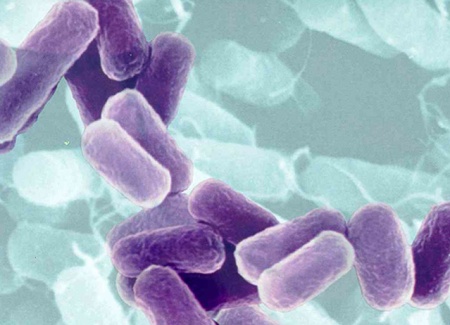Alien life may be all around us

Alien life may exist all around us according to a physicist at Arizona State University. Talking at a major science conference in chicago, Professor Paul Davies explained that there could very well be "shadow lifeforms" existing all around us, just that no one has ever bothered to look.
He also advised that it is quite likely that "shadow life" exists in deep sea hydrothermal vents or toxic (to us) arsenic lakes. These forms of life would be totally unlike life as we know it.
The subject of the science conference, by a group called the American Association for the Advancement of Science (AAAS) was to discuss the possibility that life may have evolved on earth more than once.
He has called on scientists to launch a "mission to Earth" by trawling hostile environments for signs of bio-activity.
"We don't have to go to other planets to find weird life. It could be right in front of our noses - or even in our noses," said the physicist. He then went on to say:
"It is entirely reasonable to expect we will find a shadow biosphere here on Earth. But nobody has actually taken the trouble to look."
"The question is why? The cost is not expensive - it would be a fraction of the money we spend searching for extraterrestrial life."
Speaking about the possibilty of a second genesis, proffessor Davies explained that the descendants may have survived up to today in a "shadow biosphere" which we have never before detected because its inhabitants have biochemistry so different from our own.
All of our equipment is designed for life as we know it so to proffessor Davies it is no surprise that we haven't found anything with a different biochemistry. Additionally this alternate life may be more weird looking than we could possibly imagine which makes looking for it all the more difficult.
These life forms could be created with DNA or RNA or may not even be carbon based, as any one of the elements needed for life as we percieve it (hydrogen, carbon, oxygen, nitrogen, phosphorus etc) could be replaced by another element.
It is all too easy to draw parallells with an episode of Star Trek, but it would be likely that the "shadow life" would not take on such a drastically different form.
Davies then gave the example that most of the jobs that can be done by phosphorus can be done by arsenic. While Arsenic may be poisonous to humans, it has chemical properties which might make it ideal in a microbe's machinery.
So how do we go about hunting for something we have never seen before?
Davies described two processes that would provide the most success, the first relies on the supposition that the "shadow life" is ecologically isolated, in niches beyond the reach of mankind. In this case we would need to begin looking in the most inhospitable environments in the world, deserts, salt lakes, and areas of high pressure, temperature or UV radiation.
The second method would make the assumption that this life is all around us, in whicvh case it could be very difficult to detect, with the most accurate method finding a way to filter everything else out.
If something was discovered it would beg the question, did it originate here, or from Mars.
Davies said:
"Personally, I'm only interested in establishing whether life happened more than once. If we find it has happened twice from scratch then its going to have happened all around the universe."
"It's going to be teeming with life and there's a very good chance we are not alone."
News Archives
- August 2024
- July 2023
- April 2023
- February 2023
- September 2022
- March 2022
- February 2022
- July 2021
- June 2021
- April 2021
- March 2021
- January 2021
- October 2020
- September 2020
- June 2020
- March 2020
- May 2019
- January 2019
- November 2018
- January 2016
- September 2015
- August 2015
- July 2015
- June 2015
- May 2015
- April 2015
- March 2015
- January 2015
- October 2014
- June 2014
- April 2014
- March 2014
- February 2014
- January 2014
- December 2013
- November 2013
- October 2013
- September 2013
- June 2013
- May 2013
- April 2013
- March 2013
- January 2013
- December 2012
- November 2012
- August 2012
- July 2012
- June 2012
- May 2012
- April 2012
- March 2012
- February 2012
- January 2012
- December 2011
- November 2011
- October 2011
- September 2011
- August 2011
- July 2011
- June 2011
- May 2011
- April 2011
- March 2011
- February 2011
- January 2011
- December 2010
- November 2010
- October 2010
- September 2010
- August 2010
- July 2010
- June 2010
- May 2010
- April 2010
- March 2010
- February 2010
- January 2010
- December 2009
- November 2009
- October 2009
- September 2009
- August 2009
- July 2009
- June 2009
- May 2009
- April 2009
- March 2009
- February 2009
- January 2009
- December 2008
- November 2008
- October 2008
- September 2008
